Ditapis dengan
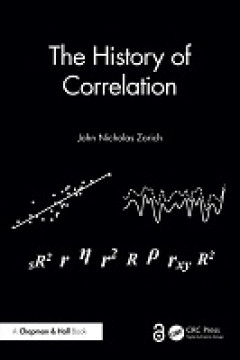
E-book The History of Correlation
After 30 years of research, the author of The History of Correlation organized his notes into a manuscript draft during the lockdown months of the COVID-19 pandemic. Getting it into shape for publication took another few years. It was a labor of love. Readers will enjoy learning in detail how correlation evolved from a completely non-mathematical concept to one today that is virtually always vi…
- Edisi
- -
- ISBN/ISSN
- 9781040261774
- Deskripsi Fisik
- 341 halaman
- Judul Seri
- -
- No. Panggil
- 510.1 ZOR t

E-book Are Numbers Real?: The Uncanny Relationships Between Maths and the Phy…
Have you ever wondered what humans did before numbers existed? How they organized their lives, traded goods, or kept track of their treasures? What would your life be like without them? Numbers began as simple representations of everyday things, but mathematics rapidly took on a life of its own, occupying a parallel virtual world. In Are Numbers Real? Brian Clegg explores the way that maths …
- Edisi
- -
- ISBN/ISSN
- 9781472139764
- Deskripsi Fisik
- 224 halaman, ilus.
- Judul Seri
- -
- No. Panggil
- 510.1 CLE a
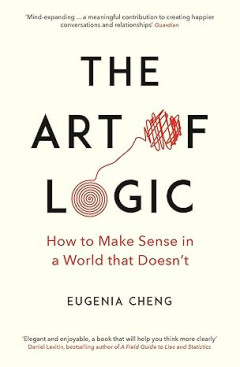
E-book The Art of Logic: How to Make Sense in a World that Doesn't
For thousands of years, mathematicians have used the timeless art of logic to see the world more clearly. In The Art of Logic, Royal Society Science Book Prize nominee Eugenia Cheng shows how anyone can think like a mathematician - and see, argue and think better. Learn how to simplify complex decisions without over-simplifying them. Discover the power of analogies and the dangers of false e…
- Edisi
- -
- ISBN/ISSN
- 9781788160391
- Deskripsi Fisik
- 277 halaman, ilus.
- Judul Seri
- -
- No. Panggil
- 510.1 CHE t
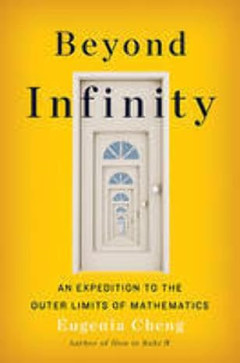
E-book Beyond Infinity: An Expedition to the Outer Limits of Mathematics
"[Cheng] does a great service by showing us non-mathematician schlubs how real mathematical creativity works." -- Wall Street Journal How big is the universe? How many numbers are there? And is infinity + 1 is the same as 1 + infinity? Such questions occur to young children and our greatest minds. And they are all the same question: What is infinity? In Beyond Infinity, Eugenia Cheng takes u…
- Edisi
- -
- ISBN/ISSN
- 9780465094813
- Deskripsi Fisik
- 282 halaman, ilus.
- Judul Seri
- -
- No. Panggil
- 519.8 CHE b
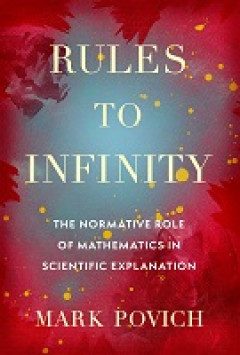
E-book Rules to Infinity: The Normative Role of Mathematics in Scientific Exp…
One central aim of science is to provide explanations of natural phenomena. What role(s) does mathematics play in achieving this aim? How does mathematics contribute to the explanatory power of science? Rules to Infinity defends the thesis, common though perhaps inchoate among many members of the Vienna Circle, that mathematics contributes to the explanatory power of science by expressing conce…
- Edisi
- -
- ISBN/ISSN
- 9780197679012
- Deskripsi Fisik
- 336 halaman, ilus.
- Judul Seri
- -
- No. Panggil
- 121.4 POV r
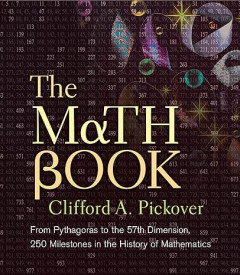
E-book The Math Book: From Pythagoras to the 57th Dimension, 250 Milestones i…
Beginning millions of years ago with ancient “ant odometers” and moving through time to our modern-day quest for new dimensions, The Math Book covers 250 milestones in mathematical history. Among the numerous delights readers will learn about as they dip into this inviting anthology: cicada-generated prime numbers, magic squares from centuries ago, the discovery of pi and calculus, and the …
- Edisi
- -
- ISBN/ISSN
- 9781402757969
- Deskripsi Fisik
- 534 halaman
- Judul Seri
- -
- No. Panggil
- 510 PIC t
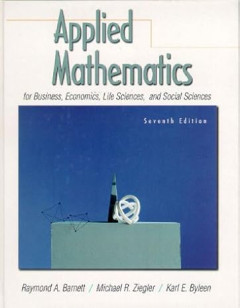
Applied Mathematics for Business, Economics, Life Sciences and Social Science…
KEY BENEFIT: This book prepares readers to understand finite mathematics and calculus used in a wide range of disciplines. Covering relevant topics from finance, linear algebra, programming, and probability, the Seventh Edition places emphasis on computational skills, ideas, and problem solving. Other highlights include a rich variety of applications and integration of graphing calculators. …
- Edisi
- -
- ISBN/ISSN
- 0130831204
- Deskripsi Fisik
- 1203 halaman, 21.59 x 3.81 x 26.67 cm
- Judul Seri
- -
- No. Panggil
- 510 BAR a
Introduction to the Practice of Statistics
Statistics is interesting and useful because it provides strategies and tools for using data to gain insight into real problems. As the continuing revolution in computing automates most of the tiresome details, an emphasis on statistical concepts and on insight from data becomes both more practical for students and teachers and more important for users who must supply what is not automated. No …
- Edisi
- -
- ISBN/ISSN
- 0716735024
- Deskripsi Fisik
- xxviii + 825 hlm; 21.5 x 26 cm
- Judul Seri
- -
- No. Panggil
- 519.5 MOO i
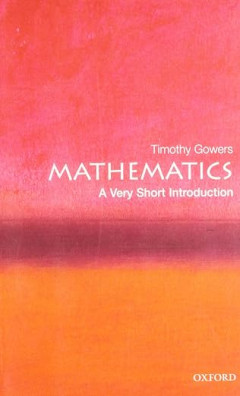
E-book Mathematics: A Very Short Introduction
The aim of this book is to explain, carefully but not technically, the differences between advanced, research-level mathematics, and the sort of mathematics we learn at school. The most fundamental differences are philosophical, and readers of this book will emerge with a clearer understanding of paradoxical-sounding concepts such as infinity, curved space, and imaginary numbers. The first few …
- Edisi
- -
- ISBN/ISSN
- 9780192853615
- Deskripsi Fisik
- 151 halaman
- Judul Seri
- -
- No. Panggil
- 510 GOW m
E-book Connecting Mathematics and Mathematics Education : Collected Papers on…
he objective of this introductory chapter is to explain the common rationalebehind the papers of this volume. The structure is as follows.The first section shows that learning environments are a natural way to addressteachers in their main role, teaching, and that therefore this approach is promisingfor improving mathematics teaching in an effective way. The section ends with ateaching model ba…
- Edisi
- -
- ISBN/ISSN
- 9783030615703
- Deskripsi Fisik
- 332 hlm
- Judul Seri
- -
- No. Panggil
- 510 WIT m
E-book The Philosophy of Mathematics Education
This ICME-13 Topical Survey is designed to provide an overview of contemporaryresearch in the philosophy of mathematics education. This is a broad cluster ofoverlapping but at times disparate themes. In thefirst instance, this publicationexposes some of the problems and questions in mathematics education that thephilosophy of mathematics education clarifies, illuminates and sometimes helps toso…
- Edisi
- -
- ISBN/ISSN
- 9783319405698
- Deskripsi Fisik
- 33 hlm
- Judul Seri
- -
- No. Panggil
- 510.1 ERN t
 Karya Umum
Karya Umum  Filsafat
Filsafat  Agama
Agama  Ilmu-ilmu Sosial
Ilmu-ilmu Sosial  Bahasa
Bahasa  Ilmu-ilmu Murni
Ilmu-ilmu Murni  Ilmu-ilmu Terapan
Ilmu-ilmu Terapan  Kesenian, Hiburan, dan Olahraga
Kesenian, Hiburan, dan Olahraga  Kesusastraan
Kesusastraan  Geografi dan Sejarah
Geografi dan Sejarah